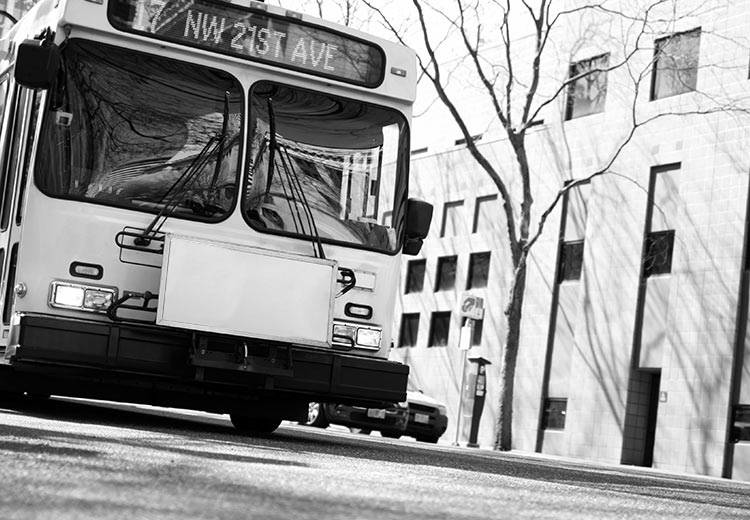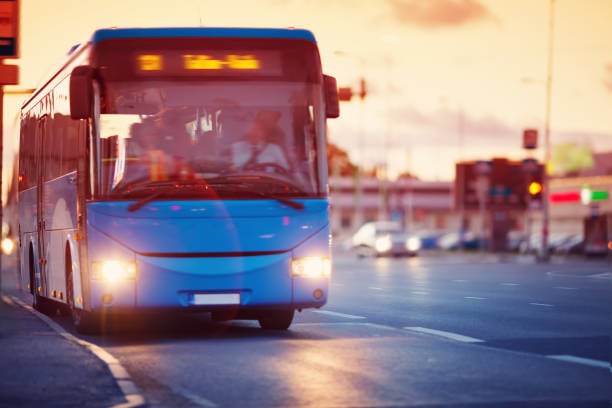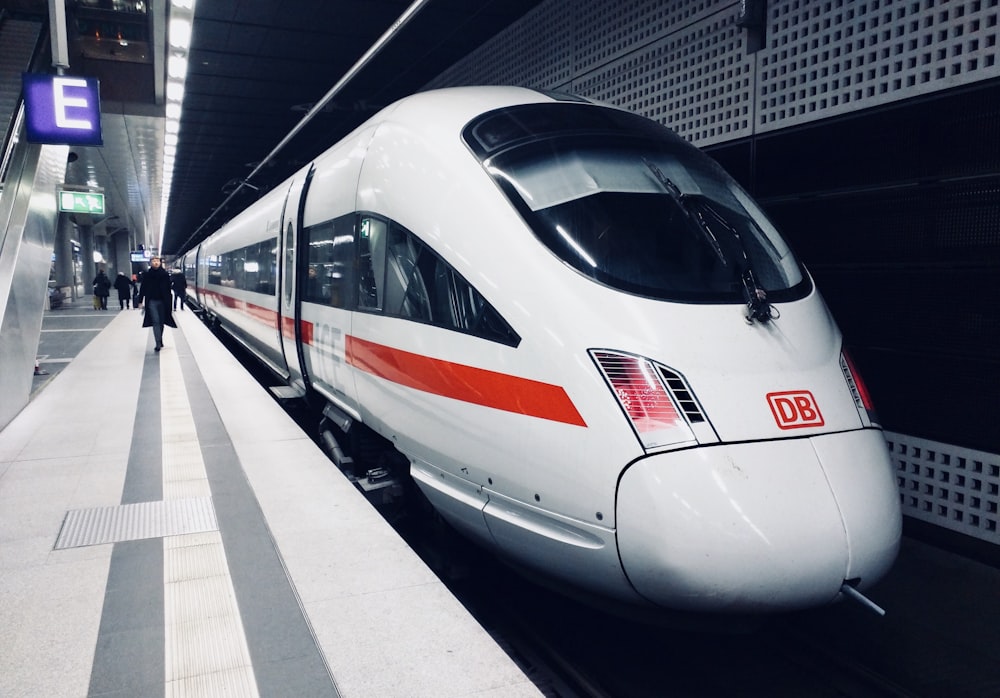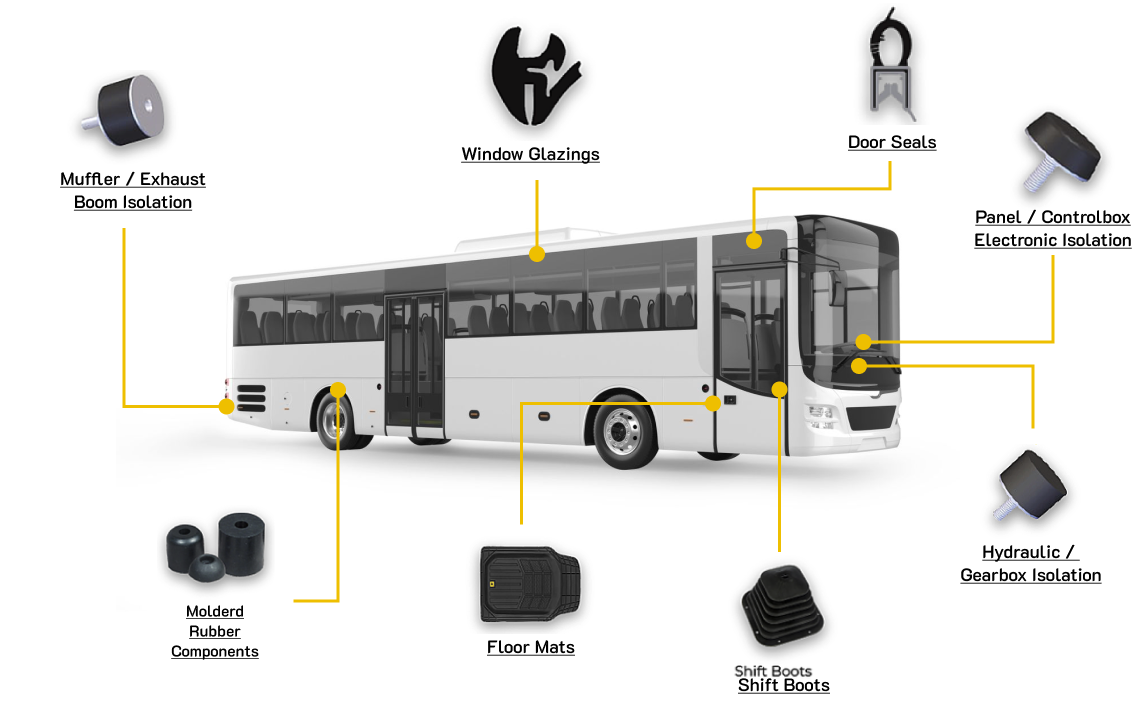Mass Transit Equipment and Rubber Manufacturing

As the priorities of the workforce change, so does mass transportation. Commuters are looking for comfortable, convenient, and efficient modes of transportation. As more people turn to ride-sharing and rental bikes, manufacturers should look for ways to continue improving their equipment.
When considering public transportation manufacturing, it is important to remember how many different kinds there are. Take a look.
- Streetcars
- Ferries
- Buses
- Subways
- Monorails
- Light rail
- Commuter trains
- Cable cars
A ferry requires a far different set of mechanical parameters than a light rail. However, many of these equipment types still share similar parts. Engines, transmissions, and suspension systems are all sure to play a role in each.
Dive into this article to learn about issues and trends in the mass transportation industry and how rubber manufacturing can provide solutions.
As an OEM, you want a reliable partner that will improve your product and make manufacturing easier. At RPM Industrial Rubber Parts, we have experts ready to show you how rubber can make all the difference in your product. Visit our website to learn more: www.rpmrubberparts.com
Rubber Parts and Mass Transit
Rubber parts are most likely not the first thing you think of when considering mass transportation equipment. Even so, they are imperative to the proper function of the machinery. One of the main purposes of using rubber parts in mass transit is to isolate vibration, shock, and noise.
If you have ever ridden on a bus or subway car, you know just how noisy and jolting the experience can be. Without engine mounts and other rubber parts, it would be far worse.
The benefits of rubber engine mounts are endless. They work by absorbing the disturbing frequencies that are naturally produced by engines. This, in turn, protects the surrounding critical components, reduces vibration, and improves the operator and passenger experience.

Issues in Mass Transit
The most glaring issue in the mass transportation industry is the reduction of passengers. A US Census report on public transportation commuters shows that the number of Americans relying on public transport to commute to and from work has been slowly decreasing since 2015. However, new investments into infrastructure and mass transit technology will hopefully bring numbers back up.
Two issues that are directly affecting the decrease in passenger usage are operator shortages and equipment reliability.
Operator Shortages and Discomfort
Many industries are experiencing labor shortages. However, in mass transportation, the labor shortage has a large impact. When there aren’t enough operators, some routes are canceled. This then prompts commuters to turn to other methods of transportation.
The San Diego Union-Tribune reports that, in San Diego, the mass transit system is short by 56 drivers. This scenario is replicated all around the United States.
There is a decrease in mass transit operators because of the physical toll it takes to do the job. A study published in the Journal of Physical Therapy Science shows that 81% of bus drivers experience lower back pain attributed to vibration.
Making public transportation more comfortable not only improves the passenger experience but also improves working conditions for operators. This is easily done by implementing rubber mounts to reduce excessive noise and vibration.
Want to learn more about how engine mounts can improve your product? Read our blog: What is an Engine Mount?
Equipment Delays Due to Repairs
There is nothing more frustrating than being in a rush to get somewhere, only to find out that your mode of transportation is broken down. This reliability issue is encouraging passengers to use independent scooter and bike rentals instead of public transportation.
According to a New York City Independent Budget Office report, NYC repairs and maintenance are the second most common reason for metro delays. While some equipment damages are not preventable, many are.
The shock frequencies that come from mass transit equipment can damage sensitive components. In turn, those damaged parts will require repairs or replacements, further increasing delays in transportation schedules. There are a variety of vibration control products that can alleviate these problems.
Trends in Mass Transportation
Passenger priorities are becoming focused on sustainability and speed. Mass transit equipment is starting to reflect this. With the rate of public transportation passengers dropping, it’s more important than ever that OEMs focus on producing innovative equipment. Here are two trends that are driving mass transit manufacturing.
Electric Mass Transit Equipment
One of the best ways to live a more environmentally friendly lifestyle is to take mass transportation – especially when it's electric. According to Smart Cities Dive, there is a huge push to add EV buses to mass transit fleets. While there are still some challenges in implementing electric mass transit, many cities have begun to take the steps to do so.
The need for isolating rubber parts does not disappear in electric vehicles. Many of the more sustainable mass transit equipment have a variety of sensors that help operators to know more about the status of the machine. These sensors require protection from vibration to ensure they are working properly.
 High Speed Travel
High Speed Travel
High speed rails, also called bullet trains, are another mass transit trend taking the United States by storm. Some high speed rails in the United States reach up to 150 miles an hour during their routes. The benefits of high speed rails are endless: quicker routes, reduced environmental impact, and job growth are only some.
Because they are traveling at such a high velocity, it’s important that bullet trains have proper suspension. This will keep operators, passengers, and critical parts safe from naturally occurring vibration. Understanding vibration theory and why it matters is the best way to keep harmful shock to a minimum.
RPM: Partner in Mass Transit Manufacturing
Mass transportation equipment manufacturers keep the world moving – and we can help. When you choose RPM, you can feel confident that you are receiving only the highest quality rubber and the best customer service. Our team’s expertise will help you improve both traditional and innovative mass transit equipment.
Ready to start your RPM experience? Give us a call at (888) 842-5668 or contact us online.





